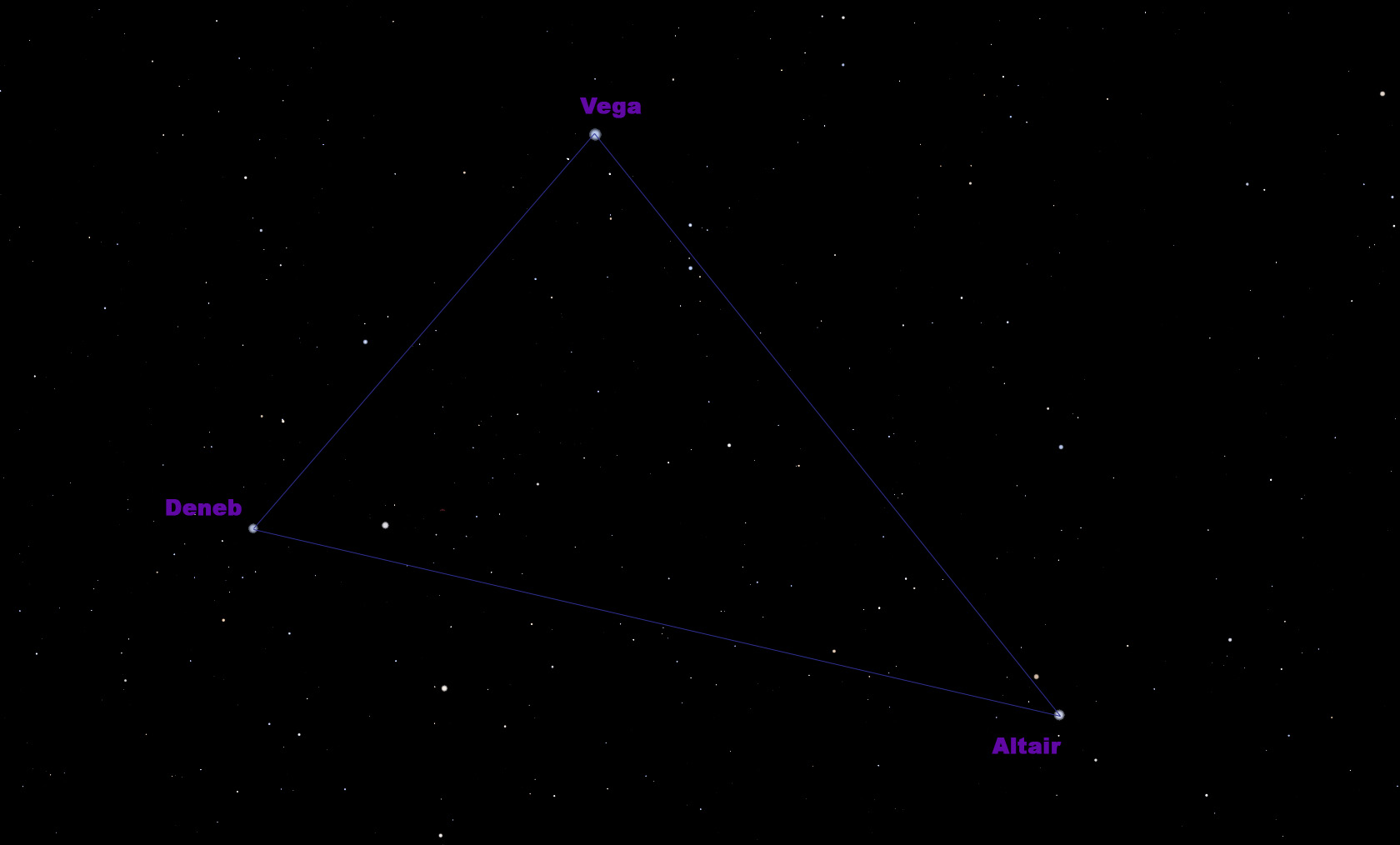The Summer Triangle is an asterism, a familiar pattern of stars that is not among the 88 constellations officially recognized by the International Astronomical Union. It is comprised of three stars of similar, but slightly differing, brightnesses: Vega, Altair, and Deneb. The asterism began its ascent into the night sky during the evening hours of early summer, and its stars continue to watch over our summer nights. During the coming autumn months, it will begin setting earlier and earlier in the predawn hours until it vanishes entirely from our view in winter (although if you live at a latitude above forty-five degrees north, Deneb will remain above your horizon all year long).
The stars that form the points of the triangle are the brightest stars in three different constellations. Vega sits at the base of Lyra (the harp); Altair is in the head of Aquila (the eagle); and Deneb serves as the tail of Cygnus (the swan). Knowledge about the apparent brightness of the stars in Earth's sky and their respective distances from Earth can help you envision some of the dimension and vastness of space.
Vega appears as the brightest of the three, and it is the fifth brightest nighttime star as viewed from Earth. Vega is 25 light years away from us. Altair, at a distance of almost 17 light years is nearer, but the star is intrinsically less bright. Therefore, despite its closer proximity, it appears slightly dimmer in our skies. Of the three stars in the Summer Triangle, Deneb appears dimmest to our eyes, but in truth it is one of the brightest stars in the entire Milky Way Galaxy—perhaps as much as 200,000 times brighter than the Sun. It only seems less bright to us because of how far away it is. Various estimates place that distance somewhere between 1400 and 2600 light years away.
Here's an analogy to help you envision the stars and their comparative distances. Consider three different sources of light: a 40-watt bulb, a 100-watt bulb, and a massive search light. For the two light bulbs to appear approximately equally bright to your eyes, the 100-watt bulb would have to be farther away (as brighter Vega is farther away than dimmer Altair). Now, for the massive search light to appear slightly dimmer than even the 40-watt bulb, consider how much farther away, vastly farther away, it would have to be. If you apply this intuitive sense of distance to your view of the Summer Triangle, you can begin to appreciate the three-dimensional character of the night sky.
The Summer Triangle is an asterism comprising three similarly bright stars: Vega, Altair, and Deneb. These are the brightest stars in the constellations Lyra, Aquila, and Cygnus. Although they are easy to spot when marked in images, the night sky includes no lines or labels. Can you find them in the unlabeled star field image? Can you find them in the sky? (Images by Karen Bellenir based on a star field generated with Stellarium 0.13.2 with permission made available under the GNU General Public License.)
To find the Summer Triangle, go outside on a clear night in August and look straight up. Among a field of dimmer stars, look for the three brightest. If your skies are especially dark and the night is clear, you might also be rewarded with a view of the Milky Way as it rises in the south, flows between Vega and Altair, and spills across Deneb. If you'd like a map to help you better navigate the sky, you can download one for free at SkyMaps.com (be sure to select the correct edition for your hemisphere).
This article originally appeared in the August 2015 issue of Observations: A Pier Press® Newsletter. You can access the archived issue here, and if you're not already a subscriber, click here to sign up. It's free.



